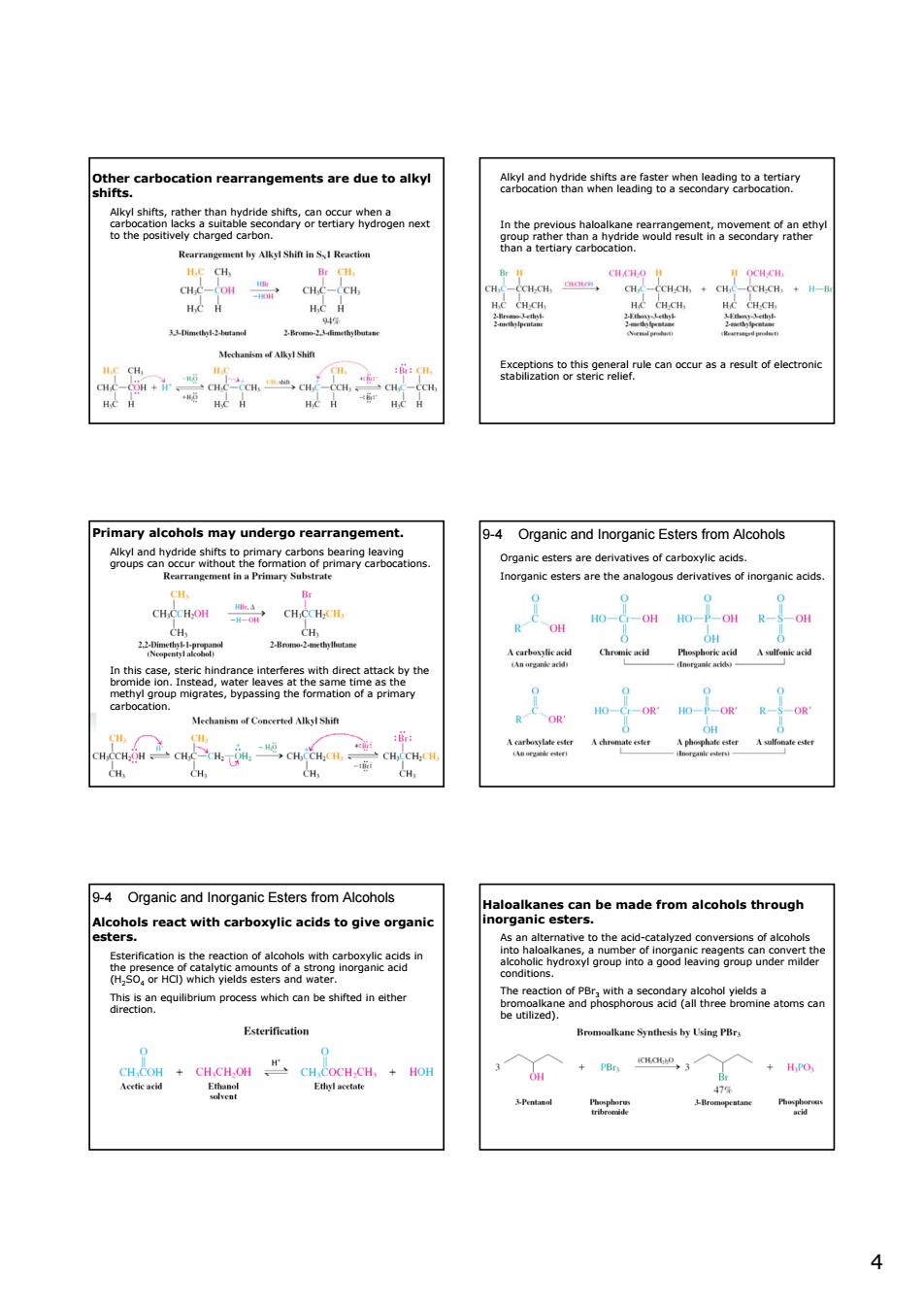正在加载图片...

Shgarbocationreamangementeareduetoalkn &genonrdahec8ieaetsatenle3weaa8creay 然” le can of le Primary alcohols may undergo rearrangement. 9-4 Organic and Inorganic Esters from Alcohols Organic esters are derivatives of carboxylic acids. Inorganicterare theanalou derivatives a2wnw J. CH 9-4 Organic and Inorganic Esters from Alcohols onesresdwithcarboxynicacastoglveorg9nle nic esters ade from alcohols through 的” gro mprcehich beenthe Brmoalkane Synhs by UingPr4 Other carbocation rearrangements are due to alkyl shifts. Alkyl shifts, rather than hydride shifts, can occur when a carbocation lacks a suitable secondary or tertiary hydrogen next to the positively charged carbon. Alkyl and hydride shifts are faster when leading to a tertiary carbocation than when leading to a secondary carbocation. In the previous haloalkane rearrangement, movement of an ethyl group rather than a hydride would result in a secondary rather than a tertiary carbocation. Exceptions to this general rule can occur as a result of electronic stabilization or steric relief. Primary alcohols may undergo rearrangement. Alkyl and hydride shifts to primary carbons bearing leaving groups can occur without the formation of primary carbocations. In this case, steric hindrance interferes with direct attack by the bromide ion. Instead, water leaves at the same time as the methyl group migrates, bypassing the formation of a primary carbocation. 9-4 Organic and Inorganic Esters from Alcohols Organic esters are derivatives of carboxylic acids. Inorganic esters are the analogous derivatives of inorganic acids. 9-4 Organic and Inorganic Esters from Alcohols Alcohols react with carboxylic acids to give organic esters. Esterification is the reaction of alcohols with carboxylic acids in the presence of catalytic amounts of a strong inorganic acid (H2SO4 or HCl) which yields esters and water. This is an equilibrium process which can be shifted in either direction. Haloalkanes can be made from alcohols through inorganic esters. As an alternative to the acid-catalyzed conversions of alcohols into haloalkanes, a number of inorganic reagents can convert the alcoholic hydroxyl group into a good leaving group under milder conditions. The reaction of PBr3 with a secondary alcohol yields a bromoalkane and phosphorous acid (all three bromine atoms can be utilized)